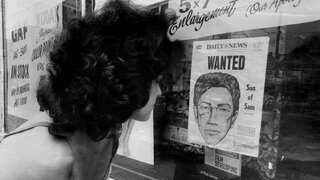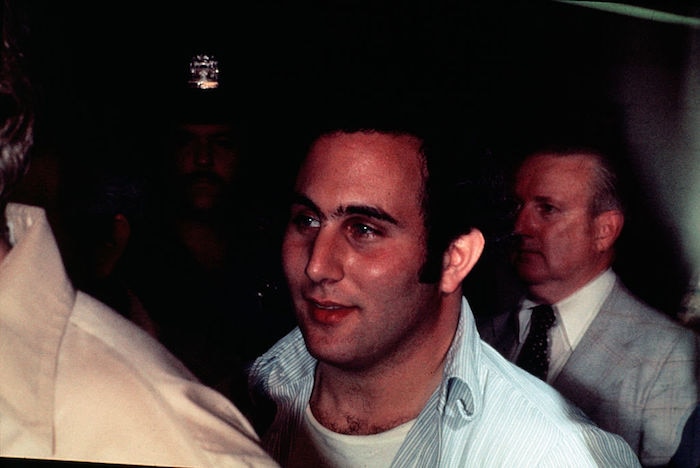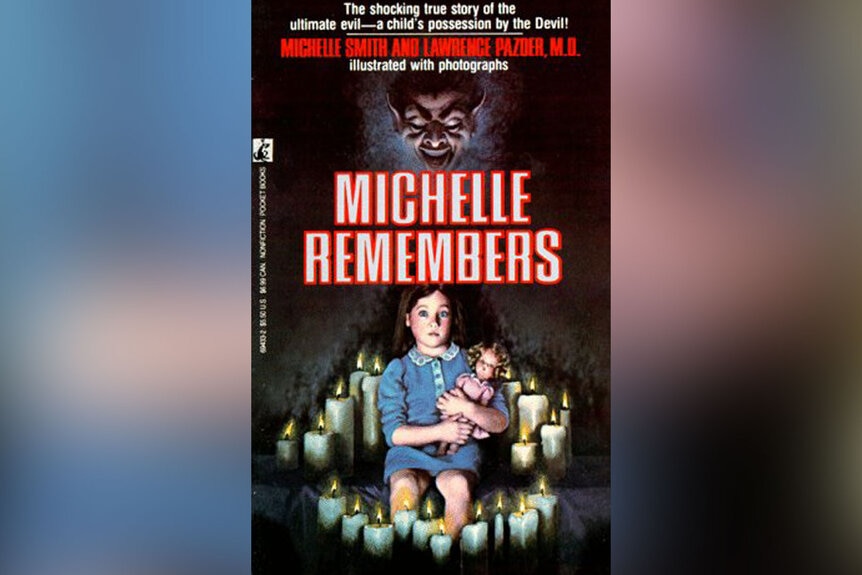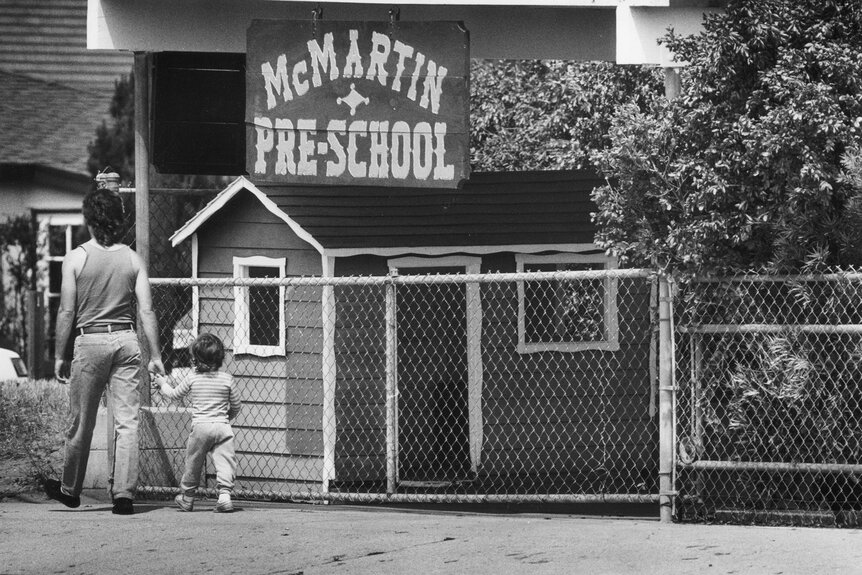Create a free profile to get unlimited access to exclusive videos, breaking news, sweepstakes, and more!
'I Was Doing Something To Appease The Devil': The 'Son Of Sam' Killings And The Satanic Panic
After David Berkowitz's confession, in the very early 1980s, a new and destructive phenomenon that has now lasted decades was creeping across the United States.

When the "Son of Sam" murders ended in New York City with David Berkowitz's 1977 arrest and quick confession to police, many watching the case unfold wondered how this seemingly anodyne young postal worker had undertaken a killing spree that perplexed investigators and left six New Yorkers dead and seven wounded. For others, the lone, mad gunman explanation for a series of killings that had brought the city to its knees felt too convenient — and Berkowitz's physical appearance didn't seem to align with eyewitness accounts of multiple witnesses. Other details of the case, including Berkowitz's reference to "other Sams out there," and the satanic graffiti on the walls of his apartment led investigators, reporters, and those closely following the case down winding and wild paths as they sought the truth about the killings.
The decade leading up to the “Son of Sam” murders had seen satanism slowly creep into American culture. In 1966, the founding of the atheistic Church of Satan in San Francisco gave way to the establishment of the church’s grottos in cities across the country. Then, the horrific 1969 Manson family murders at the home of Sharon Tate culminated in Charles Manson proclaiming, "I am the Devil, and the Devil always has a bald head!" at his 1971 sentencing as he revealed his freshly-shaved head. Major media hype around this new perceived threat of Satanism ensued. It was quickly coupled with opposition from Christian fundamentalists, who saw an easy foil to further their religious and political goals. In this period, in the years after his capture, Berkowitz suddenly changed his story — he did not act alone, he said, but was the fall guy for an apocalyptic cult bent on societal Armageddon.
In the early 1980s, this bleeding in of supposed Satanic culture and the occult gave rise to a new phenomenon that would soon spread across the country. Divergent social factors — including the rise of fundamentalist Christianity, the recognition of post-traumatic stress disorder along with the now-debunked theory of repressed memory in psychology, and an increase in working mothers who were dependent on child day care — coalesced and gave way to the so-called "Satanic Panic," one of the most destructive moral panics the nation has seen.
The Satanic Panic in mainstream culture focused largely on the idea of satanic ritual abuse as a vast conspiracy in which thousands of children were being physically and sexually abused by a large and organized cabal of Satanists hiding in plain sight. Kids were being abducted nationwide and/or bred so that Satanists could rape, maim, and kill them in the service of devil worship, people were saying.
“The conspiracy theory was that they were conducting human sacrifices all over America — by some claims, tens of thousands of people a year. They could never be caught because they've infiltrated law enforcement and the media, so they could basically act with impunity,” Joseph Laycock, an associate professor of religious studies at Texas State University, explained in an interview. “They ran day care centers and would perform satanic rituals on your children while you were at work. These rituals were so bad that, as a defense mechanism, they shattered the human mind so you had no memory of it. Eventually, this dovetailed with theories about repressed memories.”
The new theory of repressed memories helped to usher satanic hysteria into the public, via the wild success of the now-discredited 1980 book, “Michelle Remembers,” co-written by Canadian psychiatrist Lawrence Pazder and his patient, Michelle Smith. The two would eventually marry. In the book, Smith purportedly undergoes recovered-memory therapy — a practice that's now widely debunked — after a miscarriage. She uncovers memories of rituals she was forced to undergo by what the authors called the “Church of Satan.” In the book, after years of abuse, Satan himself appeared at an 81-day ritual alongside Jesus Christ and Michael the Archangel, who removed the scars from Smith’s prolonged abuse and told her that someday, she would remember all that had happened to her.
The book was an enormous hit. It was featured in People and the National Enquirer, spawned a national tour and netted the authors a nearly $250,000 payday for the paperback rights. When Smith appeared on “Oprah” in 1989, host Oprah Winfrey never questioned the veracity of her claims of satanic abuse. Why did Pazder not take this story of satanic ritual abuse to the police? Why was Smith confirmed to have been at her elementary school during the time of the alleged 81-day ritual? How come no one could corroborate any of her claims, or has even been named as one of her non-familial Satanic abusers? All of these questions are logical, but, amid the hysteria, they mostly went unasked and unanswered.
As the book grew in popularity, so did widespread belief in nefarious Satanic cults and a rise in imitative accusations. The worst of these resulted in the tragic McMartin preschool investigation and trial, which, by the time it ended in 1990, became the nation’s longest and costliest investigation and court case. It began after a mother accused a teacher at the preschool, Ray Buckey, of sexually abusing her son after the boy had painful bowel movements. Overlapping accusations spiraled into wild allegations of children being taken through tunnels and flushed down toilets, claims that Buckey could fly, and accusations that the McMartins were using the children to create child sexual abuse images. In the end, seven men and women affiliated with the McMartin preschool faced 321 counts of child abuse involving 48 children.
By 1990, after all of the charges were dropped by prosecutors in California, Buckey had spent over five years behind bars — without ever being convicted of a crime. The total cost of the investigation and trial was upwards of $15 million. The McMartin school was closed and destroyed. Several lives were ruined. In 2005, child accuser Kyle Zipolo confessed that he had fabricated everything he’d said while under pressure from parents and investigators.
“I said a lot of things that didn't happen. I lied,” he wrote. “Anytime I would give them an answer that they didn't like, they would ask again and encourage me to give them the answer they were looking for. ... I felt uncomfortable and a little ashamed that I was being dishonest. But at the same time, being the type of person I was, whatever my parents wanted me to do, I would do.”
Berkowitz had already invoked aspects of the occult in the 70s, via the cryptic letters he sent to the press and the Satanic graffiti later found scribbled on his apartment walls. But in a 1997 interview with Maury Terry, he spoke explicitly about his supposed involvement with the Process Church of the Final Judgment, a Scientology splinter group that may or may not have been operating in Yonkers’ Untermyer Park during his killings. Berkowitz said he’d attended ceremonies there after he'd met some Process Church members.
“Looking back and seeing what had happened, I was being introduced into the occult, into Satanism. It was a recruitment process, a slow but methodical recruitment process,” Berkowitz said in that 1997 interview. “They were about making wars, and they believe that the end of the world will come around the year 2000. And they believe that Jehovah and Lucifer and Satan were working together to bring about terrible cataclysmic events. And these people were — based on that belief — they were working with Satan to try to bring out a lot of chaos.”
Meanwhile, as Berkowitz continued to sow chaos with his changing story, many people went to jail over false claims of this kind: Dan and Fran Keller were sentenced to 48 years in 1991 in Texas for repeatedly abusing several children, and were only deemed innocent and released in 2013; the West Memphis Three, a trio of teens into goth and metal music who found themselves accused of a 1993 triple murder, took Alford pleas in 2011 to have their sentences commuted to time served — 18 years; and in 2018, a Kentucky judge dismissed murder charges against Garr Hardin and Jeffrey Clark, who were convicted of the 1992 murder of 19-year-old Rhonda Sue Warford in an alleged satanic ritual.
More than 12,000 accusations of group sexual abuse based on satanic rituals were made across the nation, according to a 1993 survey conducted by the National Center on Child Abuse and Neglect of more than 11,000 psychiatric and police workers. Yet not a shred of hard evidence has ever emerged in these cases.
“Berkowitz became part of this kind of tableau,” Laycock said, summing up the power of the Satanic Panic and the mass hysteria it caused. “It’s David Berkowitz. And it's heavy metal music. It’s day care centers. And it all just gets blurred together in the media into something that isn't real — but this massive conspiracy can feel totally real.”
Berkowitz is now a born-again Christian and continues serving 25-year-to-life sentences for each of the six murders to which he originally confessed. In a 2017 interview, he spoke about his mental state at the time of the killings, including his schizophrenia, attention deficit disorder, hallucinations, his readings of The Process Church’s writings in that period of his life, as well as his communication with Samhain, a demonic entity.
“These things became very real,” Berkowitz said.
"[The shootings were] a break from reality,” he added. “I thought I was doing something to appease the devil. I'm sorry for it."






























